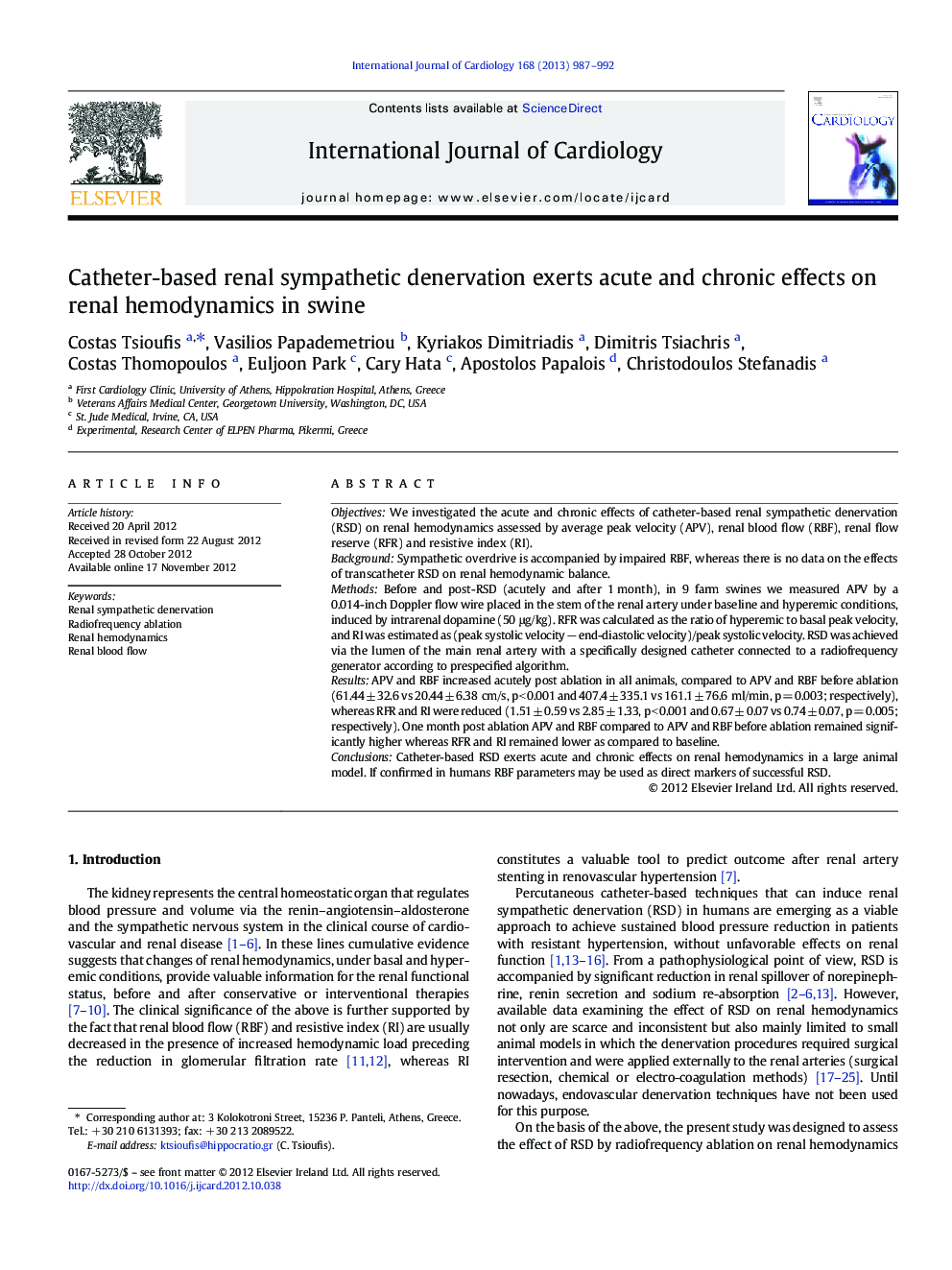| Article ID | Journal | Published Year | Pages | File Type |
|---|---|---|---|---|
| 5974162 | International Journal of Cardiology | 2013 | 6 Pages |
ObjectivesWe investigated the acute and chronic effects of catheter-based renal sympathetic denervation (RSD) on renal hemodynamics assessed by average peak velocity (APV), renal blood flow (RBF), renal flow reserve (RFR) and resistive index (RI).BackgroundSympathetic overdrive is accompanied by impaired RBF, whereas there is no data on the effects of transcatheter RSD on renal hemodynamic balance.MethodsBefore and post-RSD (acutely and after 1 month), in 9 farm swines we measured APV by a 0.014-inch Doppler flow wire placed in the stem of the renal artery under baseline and hyperemic conditions, induced by intrarenal dopamine (50 μg/kg). RFR was calculated as the ratio of hyperemic to basal peak velocity, and RI was estimated as (peak systolic velocity â end-diastolic velocity)/peak systolic velocity. RSD was achieved via the lumen of the main renal artery with a specifically designed catheter connected to a radiofrequency generator according to prespecified algorithm.ResultsAPV and RBF increased acutely post ablation in all animals, compared to APV and RBF before ablation (61.44 ± 32.6 vs 20.44 ± 6.38 cm/s, p < 0.001 and 407.4 ± 335.1 vs 161.1 ± 76.6 ml/min, p = 0.003; respectively), whereas RFR and RI were reduced (1.51 ± 0.59 vs 2.85 ± 1.33, p < 0.001 and 0.67 ± 0.07 vs 0.74 ± 0.07, p = 0.005; respectively). One month post ablation APV and RBF compared to APV and RBF before ablation remained significantly higher whereas RFR and RI remained lower as compared to baseline.ConclusionsCatheter-based RSD exerts acute and chronic effects on renal hemodynamics in a large animal model. If confirmed in humans RBF parameters may be used as direct markers of successful RSD.
